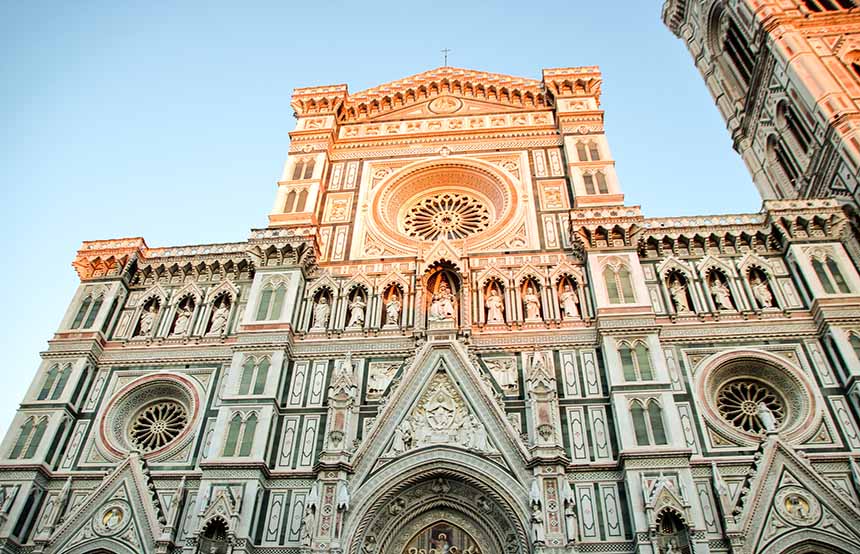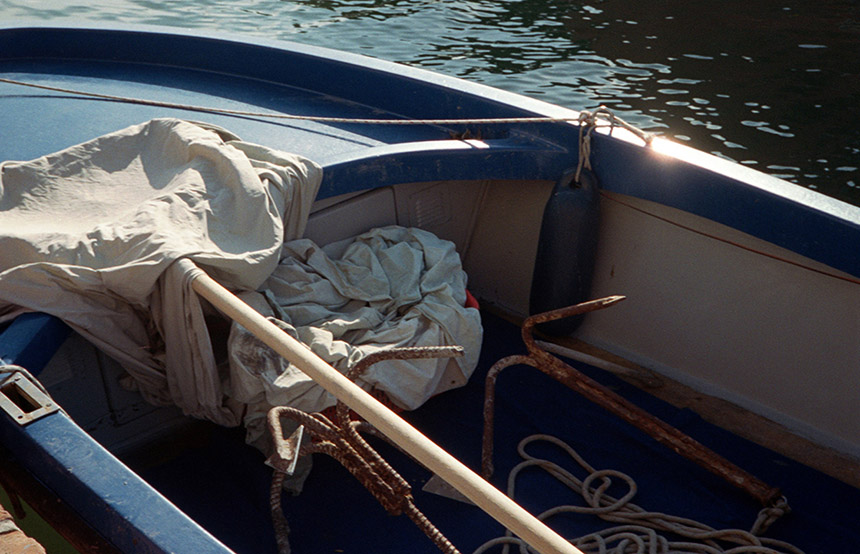What comes to mind when you think of Italy? From mouthwatering pasta dishes and moving music to incredible frescos and stunning scenery, it’s easy to list what there is to love about this country. The less easy part is deciding which area of the country to visit. Florence vs Venice is the tough choice we have to work through today. These two iconic cities are not only popular tourist destinations but have also contributed significantly to the development of Italian art, culture and politics. They’re both situated in the north of the country but have distinct differences in overall vibe. So when it comes to comparing Florence vs Venice, is one more worth visiting than the other? Keep reading to find out.
Food
Food comes first. Always. Especially when we’re talking about Florence vs Venice. Each city has distinct italian culinary traditions that reflect their different histories, geographies and cultural influences. As Florence is located in Tuscany, it’s known for its rustic and hearty cuisine made from high-quality local, fresh and simple produce, such as olive oil, herbs and vegetables. Famous dishes include bistecca alla fiorentina – a juicy T-bone steak that’s grilled over a wood fire and served rare; ribollita – a warm and hearty vegetable soup made from bread, beans and vegetables; and pappa al pomodoro – a traditional tomato and bread soup flavoured with garlic and basil. Yum. Unsurprisingly, Venetian cuisine is influenced by the city's maritime history and its location on the Adriatic Sea. So you can expect a lot of fresh and tasty seafood here. The cuisine is often prepared in simple and traditional ways that highlight and enhance the natural flavours of the quality ingredients. Scan menus for sarde in saor – marinated sardines with onions, raisins and pine nuts; risotto al nero di seppia – a creamy risotto coloured with squid ink; and fritto misto – fried shellfish, fish and squid. We couldn’t suggest Italian food without talking about excellent wine, could we? Florence is famous for its Chianti: a red wine made from Sangiovese grapes with a rich and complex flavour. Prefer Prosecco? Venice is known for this light and refreshing sparkling white wine made from Glera grapes.

Art & Architecture
Both Florence and Venice are famous for their rich artistic and architectural heritage – some of the most renowned artists and architects in history were born in these cities, each with distinct styles and influences to separate them from each other. Florence is often considered the birthplace of the Renaissance, and the architecture and art in this city certainly reflect this influence. From Michelangelo's David and Botticelli's The Birth of Venus to Leonardo da Vinci's Annunciation, it’s home to some of the most famous works of art in the world. Not forgetting the Duomo Cathedral, a masterpiece of Renaissance architecture that features an impressive dome designed by Brunelleschi. Venice is not without its fair share of famous works of art either, as you can see Titians, Tintorettos and Bellinis during your visit. But this ‘floating’ city is known mainly for its architecture, which reflects its rich maritime history and location on the water. Expect lots of Byzantine-influenced domes, colourful facades and beautiful Gothic arches. One of the most popular landmarks here is the Piazza San Marco, home to the Doge's Palace and St. Mark's Basilica, a masterpiece to say the least. And we haven’t yet mentioned the many museums and galleries in both of these Italian cities. Florence is home to the Uffizi Gallery that houses one of the most important collections of Renaissance art in the world, as well as the Accademia Gallery (head this way for Michelangelo's David). Among the must-sees in Venice, there is the Peggy Guggenheim Collection, where you’ll be able to get up close and personal with works by some of the most famous artists of the 20th century, as well as the Gallerie dell'Accademia, featuring works by Venetian painters from the 14th to the 18th centuries.

Image by Marie Champenois
Landscapes & Scenery
The breathtaking landscapes of Florence and Venice couldn’t be more different. Nestled between the Apennine Mountains and the hills of Chianti, Florence's sweeping hills have been the inspiration for myriad artists and writers throughout history. Everyone knows that the Tuscan villages and countryside makes for a picturesque backdrop – a landscape that has also contributed to the city's reputation as a centre of artistic and cultural innovation. The Arno River flows right through the city, dividing it into two sections, and is spanned by a number of famous bridges, including the Medieval Ponte Vecchio. On the other hand, we have Venice: a city that’s located on a group of small islands (118 to be exact) in the Venetian Lagoon. It’s totally surrounded by water, so its landscape is dominated by canals that are lined with incredible historic buildings and interspersed by bridges. The unique waterways here have allowed the city to become an important place for trade and commerce over the centuries, and its canals have contributed to the city's unique architectural style and cultural identity too. The Grand Canal – the main waterway through the city – is fringed with stunning palaces and is considered one of the most beautiful waterways in the world.
So which city comes out on top in the comparison of Florence vs Venice? We couldn’t possibly choose, so you’ll have to visit them both to decide for yourself…
Header image by Faustine Poidevin













